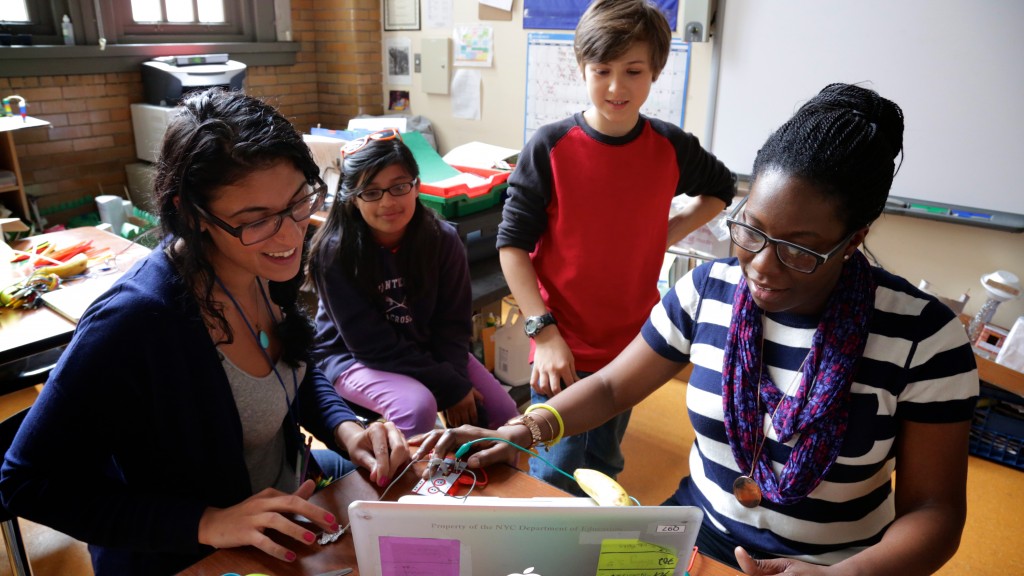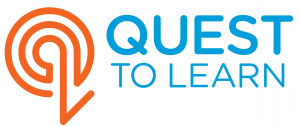Election season always becomes an inflated game of blame. After all David is more David with a Goliath.
By now Mitt Romney’s despicable moment in the sun in mid-September is old news. Not easy or even excusable news (it took him almost 3 weeks–as polls continued to slip–to say he was “completely wrong“) but it has been through the media spin and thrown back out again. That one moment’s passing does not erase the fact that poor and middle class people have become this ticket’s foe – no need for Medicare, Welfare, Unions, Healthcare. No soup kitchen photo can hide this clearly stated platform: the 47% (or 30%) are the reason for our wavering economy, their future mooching will drag us all down.
Every faith, from Mormon to Catholic, Muslim to Buddhist, Religious to Secular, all contend that we must look out for the poor and in need. Why not fight to support them? No, no, they are to be feared. Unregulated, risky, predatory housing lending be damned.
Education Has It’s Own “47%” Scapegoat
Education has been having it’s own dramatic “47%”ing for sometime now. You see, as the story goes, the reason why education is “failing” is because educators just “don’t care enough.” A small percentage of amazing teachers believe in kids, the tale continues, but most, especially those who work in high poverty schools, do not believe in the children they serve, their expectations are too low, and they in fact do not know how to teach. Goliath. Bad bad Goliath. And here’s the thing, it’s not 47% this story aims at, instead the majority of education is in the cross hairs.
Some Examples of the 47%-ing
- Kevin P. Chavous, “attorney, author, and education reform leader,” posts “Kids In Poverty Can Still Learn” and claims that “far too many people blatantly say to [one school leader] things like “It’s impossible to educate poor black kids,” and “You need to change your school’s demographic to have any real success.” While the post makes ridiculous and largely unfounded claims, the comments below it are full of honesty and worth a read. Here’s one:

- Dr. Steve Perry travels the country professing a reform agenda, and along with it blaming teachers – as he did on Melissa Harris-Perry’s Show, saying “teachers only work 8 months” and are overpaid: what “a 21 year old” makes starting out in education is “a pretty good deal.” Pretty good compared to what other life-critical-profession? To starting doctors? Here is one clip (sorry it’s brief on this site), and here is the next when Melissa Harris-Perry is shocked by his comments. The entire segment is worth a look. Which led reporter Joy Reid to tweet:
- The Gates Foundation has had a series of back-and-forth posts with Anthony Cody, an educator, regarding issues in education. In one of Gates’ responses titled “Poverty Does Matter–But It Is Not Destiny” the author states: “We also believe there are so many problems with our current [education] system that erecting barriers to educational success, that setting up false choices -i.e., dealing with poverty or helping teachers be most effective is an either/or choice – will only slow down progress for students. We need to address all elements of the problem.” This response echoes the false argument of many “reformers,” that educators who talk about poverty are somehow making excuses. It seems to me comments like these are actually the ones creating this false dichotomy.
- NYS’s “reform agenda” – just one state of many using Race To The Top funding to push initiatives – involves teacher effectiveness rubrics, oodles of assessments, and test scores tied to performance evaluations. The message to many educators is that they have no expertise, and that non-educators like Dave Coleman know exactly what they should do with their time – despite not appearing in any classroom piloting these new “solutions.”
The Issue Is Not The Issue
There are some major problems here in this “trickle down” math problem:
That our economy is failing because our education system is failing because our teachers are failing.
Education is not failing, or at least not in the way everyone is saying
To watch the Chevron commercial, or hear any candidate speak, or watch the news, one would think all of US education is doomed. Our science scores are worst in the world! Oh no! Students literacy is failing! Foreshame! But turns out that is not exactly the correct picture.
Take the most recent data review from the Program for International Student Assessment (PISA) administration in 2009. A test comparing 15-year olds around the world in math, science, and reading literacy. An often sited source by reformers for the woes of US education.
(Note: All below images are from Highlights from PISA 2009, a data mining of that international testing data. Available for free at the link.)
First, US averages are nearly identical to the averages of other countries in science literacy. Now average does mean some students performed above and some below, but there is not an alarming difference.

Also, the science literacy scores showed improvement from the previous test administration, now on par with other countries.

Most eye opening is the literacy scale, which at first makes the US appear to be one of the lowest scorers of developed countries.
Finland! Grr, there you are with a combined reading literacy scale score of 536! Look at us down there, tied for 12th place. Korea, Japan, even Canada beat us! Say it ain’t so.

But now look at this.
If America’s high income schools (ones with less than 10 percent of students eligible for free or reduced-price lunch) were their own country… scale score 551… they would perform well above top-of-the-list Republic of Korea…scale score of 539.

Add in more students with lower income households and the scale scores drop and drop and drop.
In fact if highest poverty schools (ones with 75 percent or more low income households) were their own country…scale score 446… they would just barely beat Mexico… scale score 425.

Poverty is a real thing
Know what else we barely beat Mexico in? Our Child Poverty Rate.

Actually that data is a little outdated, it was from 2005. Here is 2012.
No better, actually worse. US remains near base bottom of all countries for our abysmally low rate of keeping children out of poverty. And hey, there’s our friend Finland again! Hi you, way up near the top ! Our child poverty rate is 4 times as high as Finland’s. …weren’t we all supposed to learn from them?

Star “reformers” have not left improving-poverty-success in their wake
For all of the reformers talk about educators being responsible for poverty, and the same reformers certainty that we just need to keep kicking and pushing and rating and pay-for-performancing educators into working harder; they have little to show for their absolute certainty. Some of the movement’s largest stars: Rhee (formerly DC), Klein(formerly NYC), and our own US Education Secretary Duncan (formerly Chicago) all claim to have the solution for educational inequity – fix those darn teachers. But note this: during each of these leaders tenures test scores rose–a point they all champion (well sort of). However, individual poverty rates also continued to climb.

Poverty rates got worse, right along with everyone else. Why are we following these people again?
The Issue Is The Issue
If it looks like a duck and quacks like a duck, it’s a duck. And this duck is that the United States has an extreme problem of poverty. There is a highly good chance that your own school, or the school of your children, or the school of the children two towns over, is largely homogenized by income and sadly, probably by race. New York Times’ did a series of brilliant infographics on segregated New York City Schools (yes, Joel Klein’s 8 years as Chancellor district) and a stunning look through the eyes of children in a piece called “Why Don’t We Have Any White Kids?” – if you follow no other link from my post, this is the one to read. New York is not alone, nearly anywhere in the country we divide our children.
Children. Let that sit with you a moment.
There is also a very good chance that the probably quite homogenized school a child goes to has quite homogenized test scores. A quick, very non-scientific, review of NYC’s school testing data from two schools shows test scores across time from a low poverty and a high poverty school. The low poverty school continues to perform at or above 80% students passing year to year. The high poverty consistently below 40%, more recently below 30% year to year.

These were two schools in one city, this pattern plays out across the country. Anecdotally, when I step into a high poverty school often one of the topics that first comes up is “our students are performing at 30% passing, what can we do?” and when I step into a high income school I often hear, “our scores are really good, we want to figure out how to push our highest kids, but scores are not really an issue here.” I hear this over and over and over and over and over.
How is it okay in American today that one could walk into a school on the border of Long Island and see high scores, high income families, and mostly white and asian students? Then the next day drive 25 mins south to the far edge of Queens and walk into a low performing school, with extremely high poverty and see mostly black and latino students? I have done that. I have made that trip in NY and NC and WI and CA and WA and DC and each time have asked: how is this okay?
On statistics alone we can assume that it’s not that the absolute-ace-teachers are all in high income schools and the education-school-drop-outs are in the high poverty. I can tell you from being in hundreds and hundreds of classrooms across the country that that is not true. I have seen the small few – literally very few – who I would not want teaching my children in both types of schools. More often I’ve seen amazingly dedicated, responsive, reflective, hard working teachers in both places as well. And those teachers are more and more stressed and burned out and demoralized than I have ever seen them before.
Poverty Is Not Destiny, If We Stop “47%-ing” Teachers and Students
Education reporter Dana Goldstein for The Nation, in a commentary on the movie “Won’t Back Down,” states this misunderstanding quite elegantly:
As an education reporter, I’ve visited many urban schools that are beacons of hope in troubled neighborhoods, but no school can find decent jobs for under- or unemployed parents who can’t put nutritious food on the table; nor can a school make up for the chronic instability of a young life spent in foster care or moving from apartment to apartment in a futile quest for safe, affordable housing. Volumes of research show such experiences affect cognitive development and children’s ability to focus in school; dedicated educators and counselors work wonders with such children each day, but they don’t rescue neighborhoods from poverty.
Is it okay that this is an election cycle where in one breath politicians talk about fixing schools and in the next are suggesting we cut all social services to support those most in need?
It is easier to create a Goliath. To blame the 47% for dragging our economy down. To blame educators for not solving one of our most embarrassing societal issues single handedly.
We do not know all the answers.
I have worked with schools that have gone from terrible results to meeting AYP. I have worked with schools that went from chaotic hallways to a dramatic shift in tone–right along the same time students became engaged in reading and writing and felt supported and listened to. I have worked with schools where teachers used to shut their doors and now share — even have friendly competitions — with resources and approaches and classroom environments.
But, I have not been in schools that have solved poverty. I have not seen a direct link between improved scores and a boost for all children – not just those scoring well. For instance, high test scores have not resulted in crumbling ceiling tiles being replaced. High teacher effectiveness rubric scores have not resulted in well paying professions for parents in the community. Properly implementing RtI has not allowed a child to do homework at night instead of babysitting siblings nearly their age.
We do not have all the answers, but we will not have them if we ignore the full problem.
If we Race to The Top, then we compete. We do not collaborate.
If we work only on teacher practice, and not children’s full lives, then we – at best – only improve a small percentage of a child’s day.
If we blame educators, then we demoralize the very people we claim to want to help.
If we blame educators, we drive people away from the critical profession.
Mitt Romney Apologized, When America Said Something
I began this post pointing out that Mr. Romney did eventually say his 47% comments were “completely wrong.” It took him nearly 3 weeks to do so, after first largely standing up for them (remember, they were not “elegantly stated“), but he did come back. Why? Because Americans said enough is enough. Polls were dropping. He had no choice.
WE, the public, must speak up loudly again. Not just for our profession, not for ourselves, but because if we reamin silent we sweep the plight of children under the cover of “bad teaching.” I hope for a conversation in which reformers aim to reform the entire system, let’s talk improving teaching and learning and living. It’s a harder question, but the most essential one to have.
Enough is enough for education’s “47%-ing.” Now is the time to speak up.



 Christopher Lehman, Founding Director, author of several popular books include Falling in Love with Close Reading (with Kate Roberts) and Energize Research Reading and Writing
Christopher Lehman, Founding Director, author of several popular books include Falling in Love with Close Reading (with Kate Roberts) and Energize Research Reading and Writing An Institute of Play “Making” Event
An Institute of Play “Making” Event e and Sequence of Making”: From Leading Kids, To Giving Them The Lead
e and Sequence of Making”: From Leading Kids, To Giving Them The Lead































